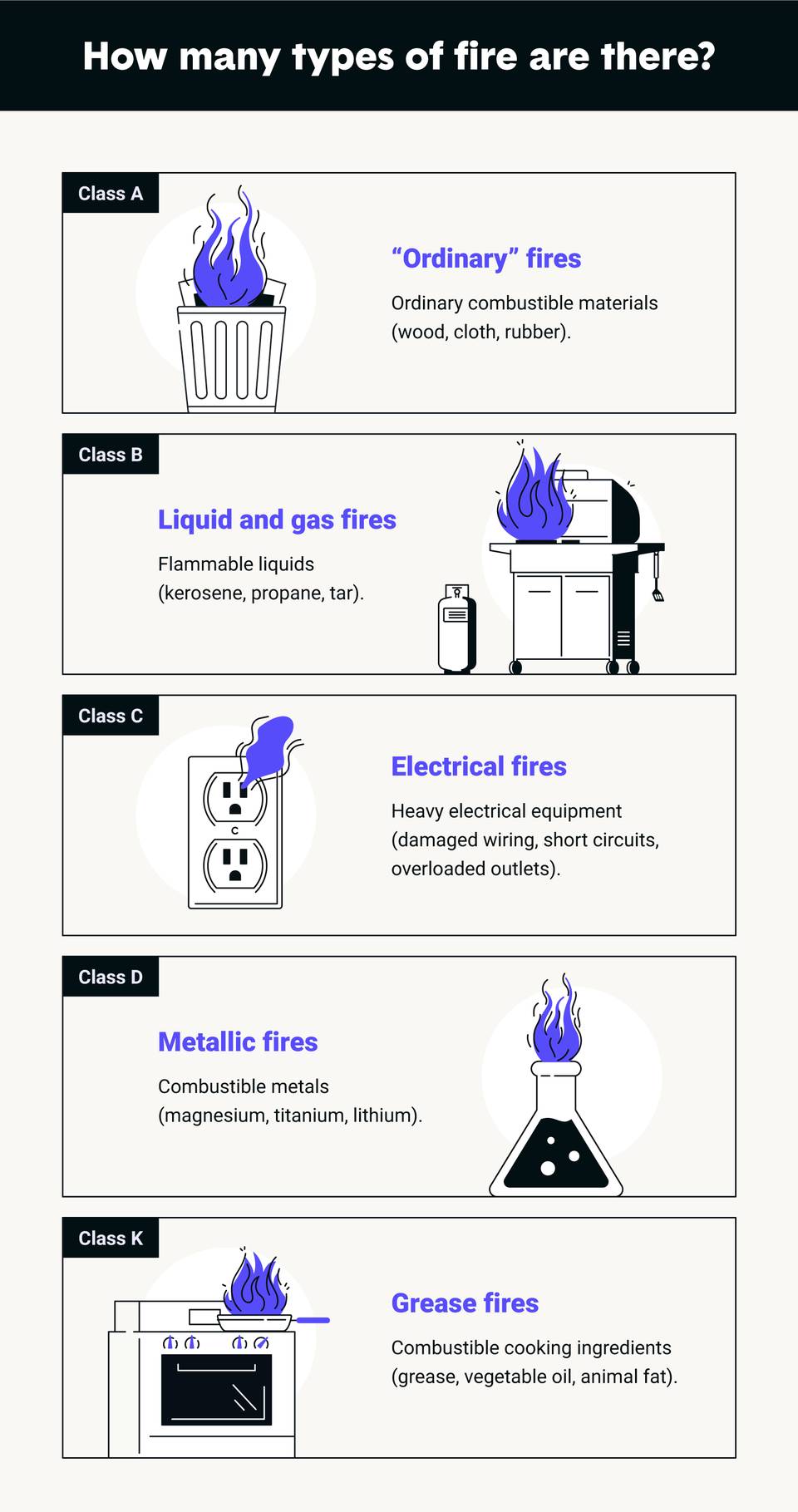1. “Ordinary” fires (Class A)
Class A fires, or “ordinary” fires, describe the least threatening type of blaze. These generally occur when a combustible material like wood, plastic or fabric catches a spark. While these fires aren’t necessarily too dangerous on their own, they have the potential to spread if not handled quickly.
How to extinguish: Class A fires can be extinguished by water or a foam extinguisher. Since these are typically small fires, other substances are generally not needed to extinguish the flame.10
2. Liquid and gas fires (Class B)
Oftentimes starting as a result of a grilling incident, Class B fires involve flammable liquids or gasses, like propane or kerosene. These liquids typically have a high carbon content, which makes them combustible.11
How to extinguish: While water can easily extinguish a Class A fire, it should be avoided at all costs when extinguishing a Class B fire. Class B fires are extinguished by smothering the flame, thus removing oxygen from it. This can be done through an aqueous film-forming extinguisher or film-forming fluoroprotein extinguisher.12
3. Electrical fires (Class C)
Class C fires start as the result of electricity and are most common in places with heavy electrical usage, like data centers. In settings like this, faulty wiring and overloaded outlets are generally the cause of electrical fires. Old homes or buildings using outdated wiring or old space heaters may also be susceptible to electrical fires.
How to extinguish: In the event of an electrical fire, it’s essential to use a nonconductive material to extinguish the flame, like a specific Class C fire extinguisher. Class C fire extinguishers employ agents that separate fuel, heat and fire, which controls the flames.13
4. Metallic fires (Class D)
Most common in laboratories, metallic fires are rarer than the other classes and include metallic flammable materials, like titanium and magnesium.
How to extinguish: You’ll need a powder fire extinguisher to put out a metallic fire. Class D fire extinguishers cover the fire in a non-reactive powder material, eventually calming the flames.14 You shouldn’t use anything reactive when dealing with a metallic fire, so water should be avoided in these cases.
5. Grease fires (Class K)
While Class B fires are most common on the grill, Class K fires happen most frequently in the kitchen, as they include grease fires and fires from cooking oils and animal fats. Class K fires tend to be dangerous because they’re difficult to manage and can spread quickly.
How to extinguish: Like metallic fires, water is likely to make the blaze worse. Class K fire extinguishers use cooling agents to smother the fire and cool down the appliance.15
For the home, the NFPA recommends a multi-purpose fire extinguisher. These extinguishers are easy to handle and can combat both small and large fires. Using conductive and non-reactive materials, they can also fight Class A fires without intensifying other reactive fire types.16




